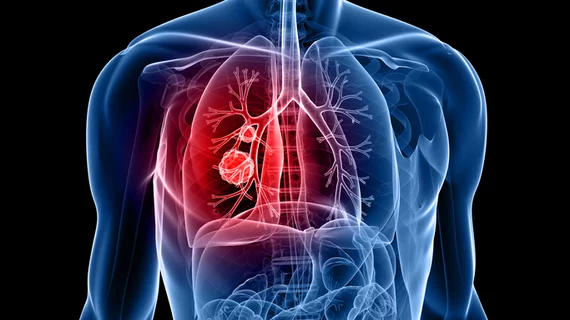CT lung cancer screening complication rate close to 17%, validating preexisting concerns
The complication rate for procedures completed following low-dose computed tomography screening for lung cancer is upwards of 16%, according to new research, solidifying some experts' concerns.
Authors of the research letter published Wednesday said their figures were lower than the 22.8% rate reported in a 2019 analysis but much higher than the National Lung Cancer Screening Trial’s 9.4% mark.
Some have criticized last year’s study published in JAMA Internal Medicine because it relied on claims data that predated LDCT screening insurance coverage, Hui Zhao, MD, PhD, with MD Anderson Cancer Center in Houston, and colleagues wrote in JAMA Network Open. Still, they explained, their complication rate is high.
“The overall complication rate from this updated analysis remained 77% higher than that reported in the NLST,” the authors wrote on Wednesday. “This higher rate observed among a screening cohort in community settings validates the concern of higher complication rates outside the NLST.”
For their Dec. 16 case-controlled analysis, Zhao et al. analyzed current procedural terminology codes (G0297 and S8032) from the IBM MarketScan Research Database to pinpoint patients who received LDCT screening between February 2015 and June 2017. Each individual also underwent an invasive diagnostic procedure within six months of screening, which included cytology or needle biopsy, bronchoscopy, thoracic surgery, and other surgical procedures.
Of the 18,887 patients who received LDCT, 665 (3.5%) also underwent an invasive procedure within six months of their exam. The overall complication rate for procedures was 16.6%, the authors found.
Most complications were associated with thoracic surgery (38.5%), followed by bronchoscopy (20.4%), and cytology or needle biopsy (9.2%). And a majority of events proved to be minor (11.2%), while major complications occurred in 1.7% of procedures.
Zhao and co-authors suggested a few possible reasons for their lower rates, including their focus on a screening cohort, whereas the 2019 study did not. The team’s three-month complication window was also much shorter than the past study’s 12-month period. A longer timeframe, they noted, may introduce complications caused by other diseases.
“As policymakers develop strategies to improve lung cancer screening rates in communities, our study highlights the importance of minimizing potential harms of screening by using shared decision-making and ensuring adherence to clinical guidelines for evaluation and management of screening-detected lung abnormalities,” the group concluded.

